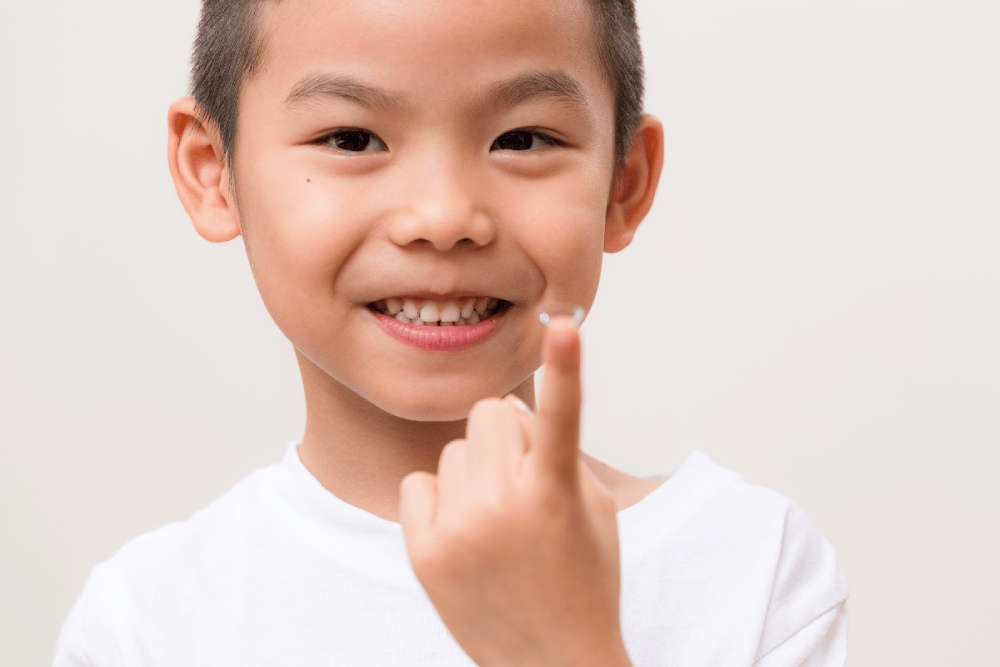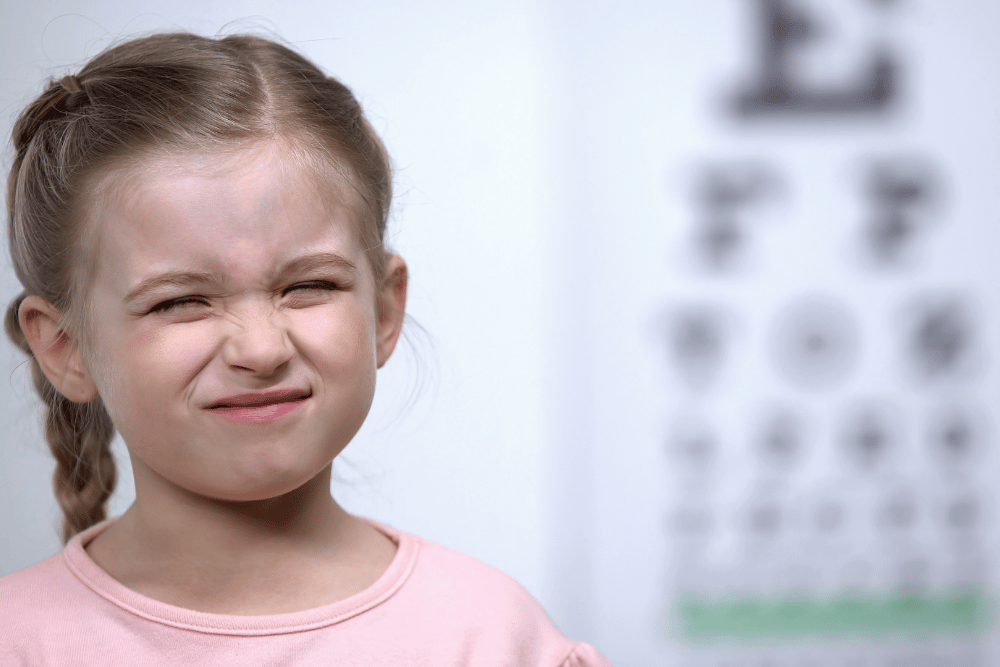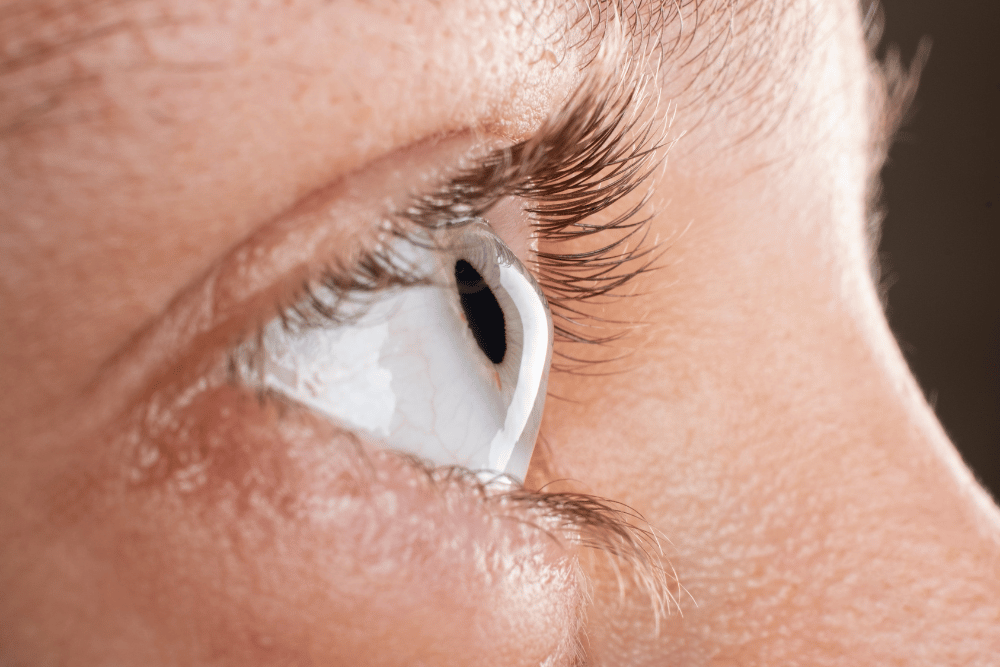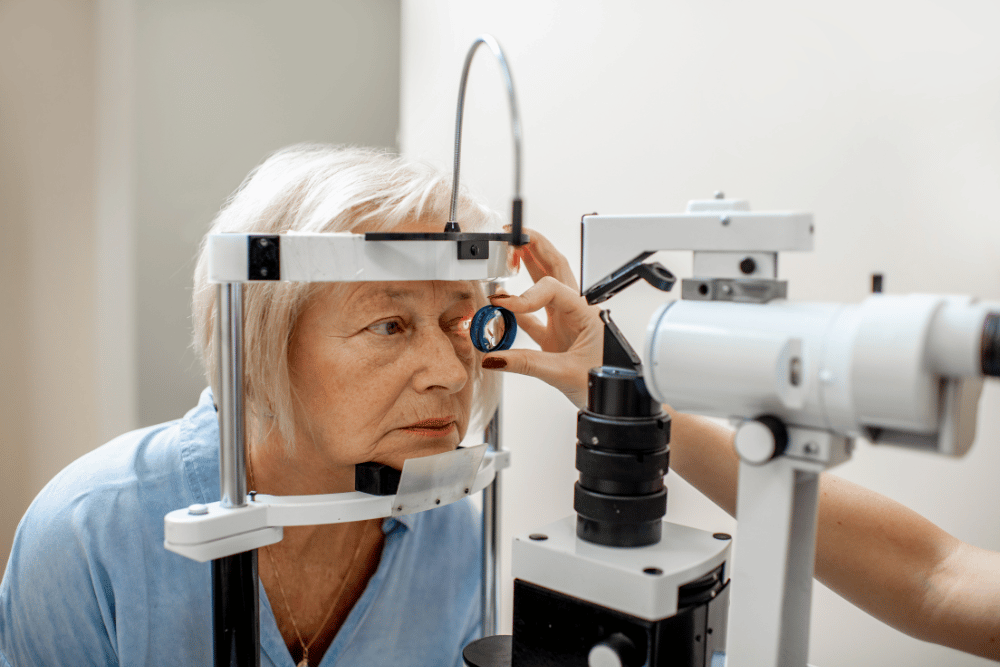If you’re a parent, keeping your child healthy and happy is at the top of your priorities. You may focus on nutrition, exercise, and regular visits with their family doctor, but there’s one aspect that often gets overlooked: their vision. Good vision is crucial for a child’s overall development, and vision problems like myopia can affect their learning if not corrected.
Myopia, or nearsightedness, happens when the eyeball grows too long, causing light to focus in front of the retina instead of directly on it. This causes faraway objects to appear blurry. In this blog, we’ll talk about this condition and the best time for kids to start myopia management.
How to spot myopia in children
First things first, how do you know if your child has myopia? Recognizing the signs of myopia in your child isn’t always easy. Myopia can often be mistaken for other common issues, and your child may assume everyone sees the world the way they do. Some of the signs and symptoms of myopia include:
- Squinting to try to see distant objects clearly
- Sitting too close to the television or holding objects close to their face
- Complaining about headaches or eye strain, especially after a period of reading or screen time
When in doubt, it’s best to schedule an eye exam with a professional who can provide an accurate diagnosis.
The importance of myopia control
Myopia doesn’t just affect a child’s ability to see; it also poses a risk to their eye health as they grow older. If left untreated, nearsightedness can increase your child’s risk of developing eye health issues later in life, including glaucoma, retinal detachment, and cataracts. By managing myopia early, we can potentially reduce these risks and protect your child’s vision.
When to start myopia management
Some parents may be reluctant to start myopia management early because they think their child is too young. However, when myopia starts at a younger age, it means your child has more years for the condition to advance. That’s why most eye doctors recommend starting myopia control as soon as possible. Research shows that starting myopia management before the age of 10, when your child’s eye is still developing, can lead to more effective long-term outcomes in reducing myopia progression.
Myopia management options
While traditional glasses and contact lenses correct vision, they can’t slow the progression of myopia. At Lawrenceville Family Eyecare, we offer a range of cutting-edge strategies to help control and reduce your child’s myopia.
Orthokeratology
Orthokeratology, also known as ortho-k, is a type of contact lens worn overnight while sleeping. It gently reshapes the cornea to correct myopia, providing clear vision without glasses or contacts during the day. Along with correcting vision, Ortho-k has also been shown to reduce myopia progression in children and adolescents.
Multifocal contact lenses
Specialized multifocal contact lenses work similarly to ortho-k lenses, except they are worn during the day to correct vision. They are designed to help children see clearly at various distances.
Atropine drops
Low-dose atropine eye drops have been found to effectively slow myopia progression. Unlike traditional atropine, which can cause significant pupil dilation, our 0.01% atropine drops offer a safer and more predictable means of reducing nearsightedness progression.
Don’t wait until your child’s myopia progresses. Book an appointment with our experts and learn more about our myopia management services in Lawrenceville, Georgia.





